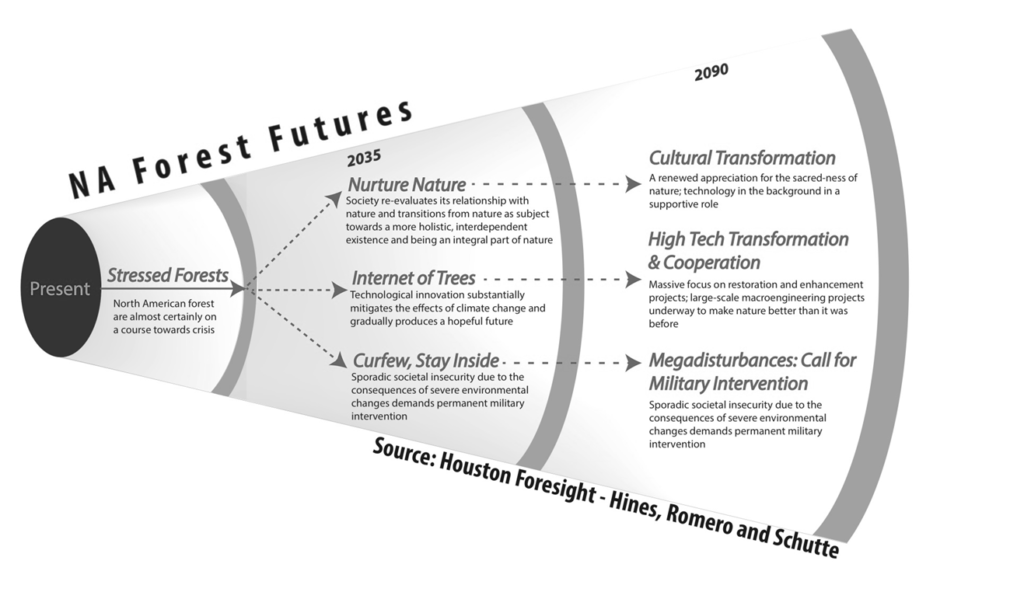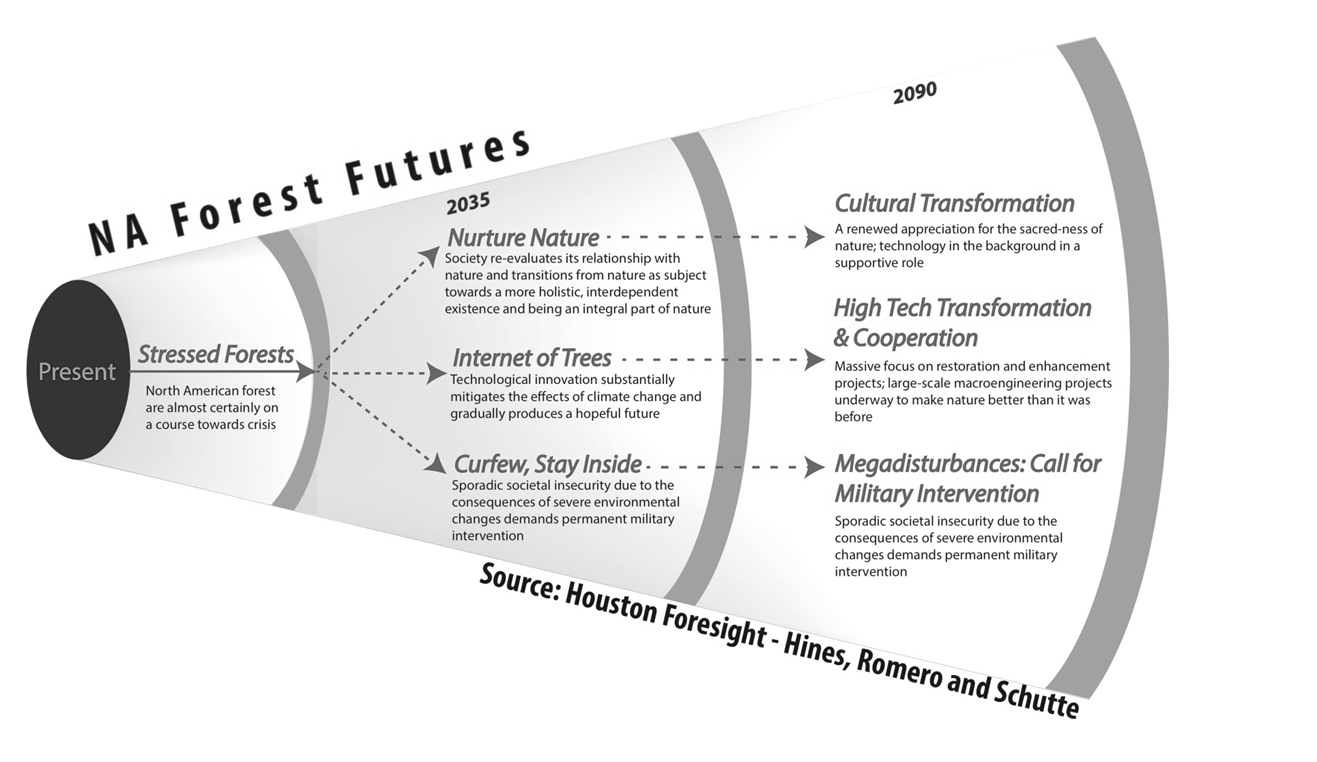I had an opportunity to do some work on backcasting with my colleagues Johann Schutte and Maria Romero, and with the support of Forestry futurist Dave Bengston. We developed a backcasting technique that we called “transition scenarios.”
The idea of backcasting is that you start from the future and work backward to the present, whereas in forecasting you start from the present and work forward to the future. It is most commonly used to create a preferred future – here’s the future we want, and then work backwards to chart a pathway to the preferred future.
We had the opportunity to do some scenario work with our forestry client. There were some scenarios that had been done not-too-long before. We reviewed them and found them very well done. But the timeframe of 2090 was a bit too daunting for our intention of tying the scenarios into our horizon scanning system and the identification of emerging issues.
We were able to come up with 2035 version of each 2090 scenario (see graphic above). We did not develop a 2035 version of the baseline, reasoning that it will surely have degraded by then.
We went through the backcasting literature and pulled out the key ideas. From there we played around with different variations. Eventually we settled on these key steps:
- Uses the scenario archetype approach (continuation, collapse, new equilibrium, transformation)
- Started with the 12 categories of drivers from the 2090 scenarios
- Backcast each 2090 driver back to 2060 in each archetype
- Backcast 2060 back to 2035
- Forecast 2035 to 2060 and compared forecasts for plausibility
- Used the 2035 drivers to create the transition scenarios.
The full article is available in the current issue of the Journal of Futures Studies).
— Andy Hines

Leave a Reply